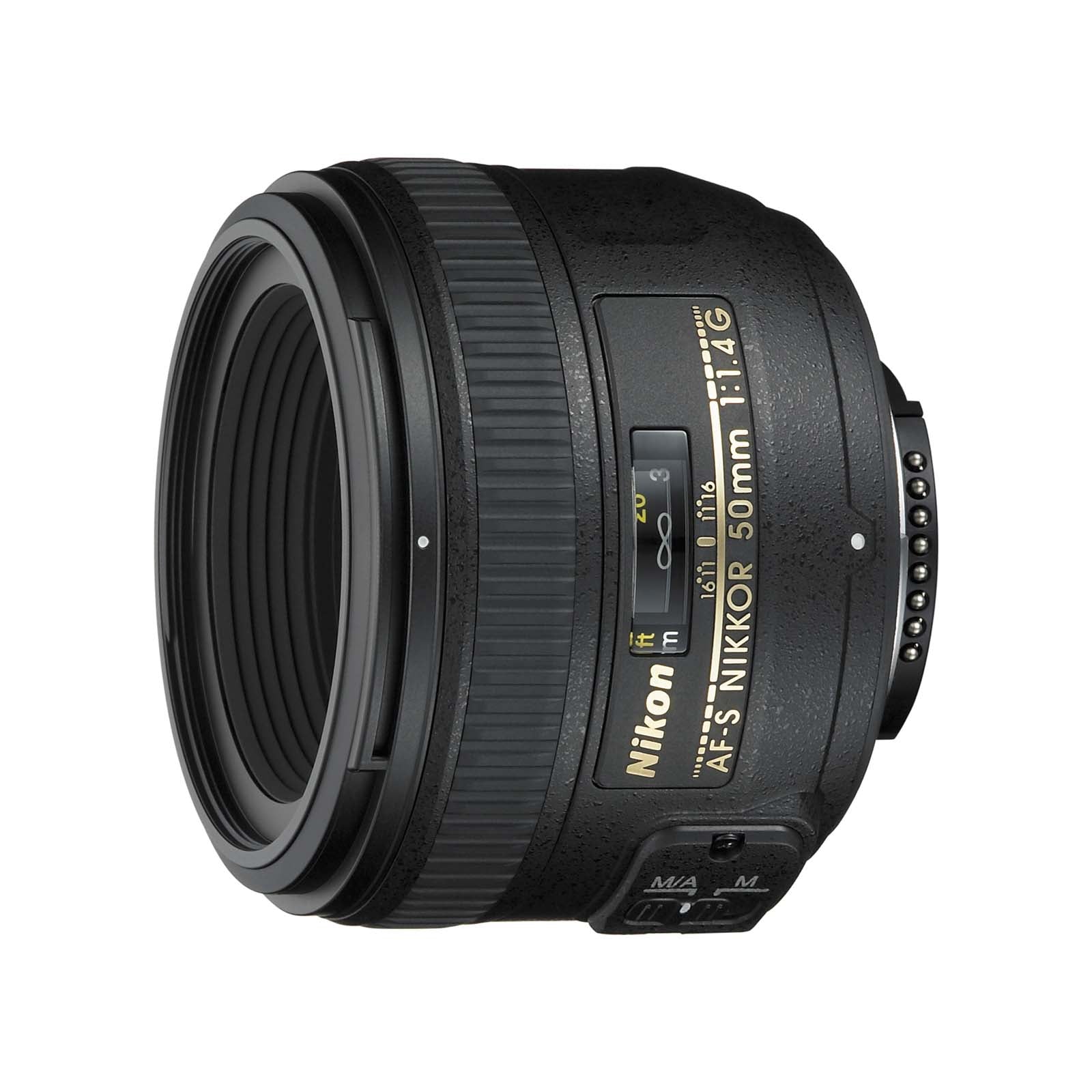Product Description
Nikon 50mm f/1.4 G AF-S Lens: Fast and Versatile Prime for Every Occasion
The Nikon 50mm f/1.4 G AF-S Lens is a high-quality prime lens that combines a large maximum aperture with advanced optics and Nikon’s exclusive Silent Wave Motor (SWM) for smooth and quiet autofocus. With its f/1.4 aperture, this lens excels in low-light conditions, offers precise control over depth of field, and creates beautifully soft background blur, making it an excellent choice for portraits, low-light photography, and everyday shooting.
Key Features:
- F-Mount Lens/FX Format (35mm equivalent: 75mm on DX-format bodies)
- Aperture Range: f/1.4 to f/16
- Silent Wave Motor (SWM) for fast and quiet autofocus
- Two Focus Modes: M/A (manual-priority autofocus) and M (manual focus)
- Internal Focusing (IF) Design: The lens barrel does not change length during focusing
- Non-rotating Front Element: Compatible with circular polarizing filters and lens-mounted accessories
Bright f/1.4 Maximum Aperture
The standout feature of this 50mm lens is its large f/1.4 maximum aperture, which provides outstanding performance in low-light conditions. The wide aperture also allows for greater control over depth of field, making it easier to isolate subjects against a beautifully blurred background. This is particularly useful for portraits or situations where shallow depth of field is desired.
Silent Wave Motor (SWM) for Fast, Quiet Autofocus
Nikon's Silent Wave Motor (SWM) technology ensures fast, quiet, and accurate autofocus, making it a versatile lens for both stills and video. Whether you’re capturing action or recording in quiet environments, the SWM delivers smooth and virtually silent focusing. The lens also supports full-time manual focus override, giving you precise control when needed.
Optical Excellence for Sharp and Clear Images
The advanced optical design of the 50mm f/1.4 G minimises both flare and chromatic aberrations, ensuring images are sharp and free from unwanted colour fringing. With high-quality optics and coatings, this lens produces crisp, vivid, and accurately rendered images with excellent contrast and colour reproduction.
Additional Features
-
Two Focus Modes:
- M/A (Manual-Priority Autofocus) allows you to switch seamlessly between autofocus and manual focus without delay.
- M (Manual Focus) offers full manual control for precision focusing.
-
Internal Focusing (IF): The lens barrel remains the same length during focusing, improving balance and handling. The non-rotating front element is especially useful when using circular polarizing filters or lens-mounted flash accessories.
-
Compact and Lightweight: Despite its bright aperture, the 50mm f/1.4 G remains compact and lightweight, making it a great option for everyday photography and for those who prefer a discreet setup.
The Nikon 50mm f/1.4 G AF-S Lens is a versatile and fast prime lens that is perfect for a wide range of photographic applications, from portraits to low-light shooting. With its f/1.4 aperture, advanced optics, and Silent Wave Motor, this lens offers exceptional image quality, beautiful bokeh, and fast, quiet performance. Whether you’re a professional or an enthusiast, the 50mm f/1.4 G is a must-have in your kit for capturing stunning images in any lighting condition.
For full specifications click Here
Payment & Security
Your payment information is processed securely. We do not store credit card details nor have access to your credit card information.
















